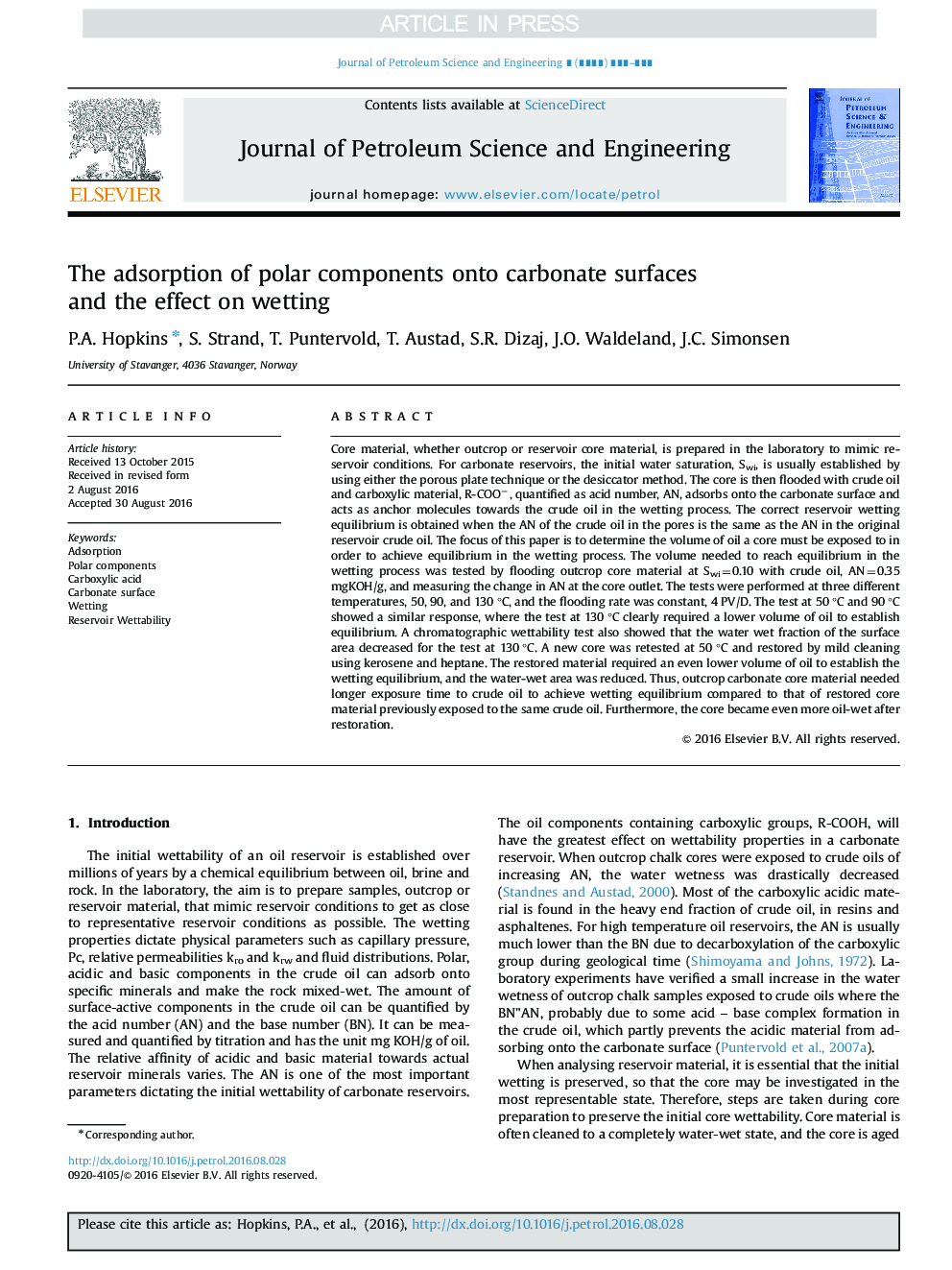| Article ID | Journal | Published Year | Pages | File Type |
|---|---|---|---|---|
| 8125702 | Journal of Petroleum Science and Engineering | 2016 | 7 Pages |
Abstract
Core material, whether outcrop or reservoir core material, is prepared in the laboratory to mimic reservoir conditions. For carbonate reservoirs, the initial water saturation, Swi, is usually established by using either the porous plate technique or the desiccator method. The core is then flooded with crude oil and carboxylic material, R-COOâ, quantified as acid number, AN, adsorbs onto the carbonate surface and acts as anchor molecules towards the crude oil in the wetting process. The correct reservoir wetting equilibrium is obtained when the AN of the crude oil in the pores is the same as the AN in the original reservoir crude oil. The focus of this paper is to determine the volume of oil a core must be exposed to in order to achieve equilibrium in the wetting process. The volume needed to reach equilibrium in the wetting process was tested by flooding outcrop core material at Swi=0.10 with crude oil, AN=0.35 mgKOH/g, and measuring the change in AN at the core outlet. The tests were performed at three different temperatures, 50, 90, and 130 °C, and the flooding rate was constant, 4 PV/D. The test at 50 °C and 90 °C showed a similar response, where the test at 130 °C clearly required a lower volume of oil to establish equilibrium. A chromatographic wettability test also showed that the water wet fraction of the surface area decreased for the test at 130 °C. A new core was retested at 50 °C and restored by mild cleaning using kerosene and heptane. The restored material required an even lower volume of oil to establish the wetting equilibrium, and the water-wet area was reduced. Thus, outcrop carbonate core material needed longer exposure time to crude oil to achieve wetting equilibrium compared to that of restored core material previously exposed to the same crude oil. Furthermore, the core became even more oil-wet after restoration.
Related Topics
Physical Sciences and Engineering
Earth and Planetary Sciences
Economic Geology
Authors
P.A. Hopkins, S. Strand, T. Puntervold, T. Austad, S.R. Dizaj, J.O. Waldeland, J.C. Simonsen,
